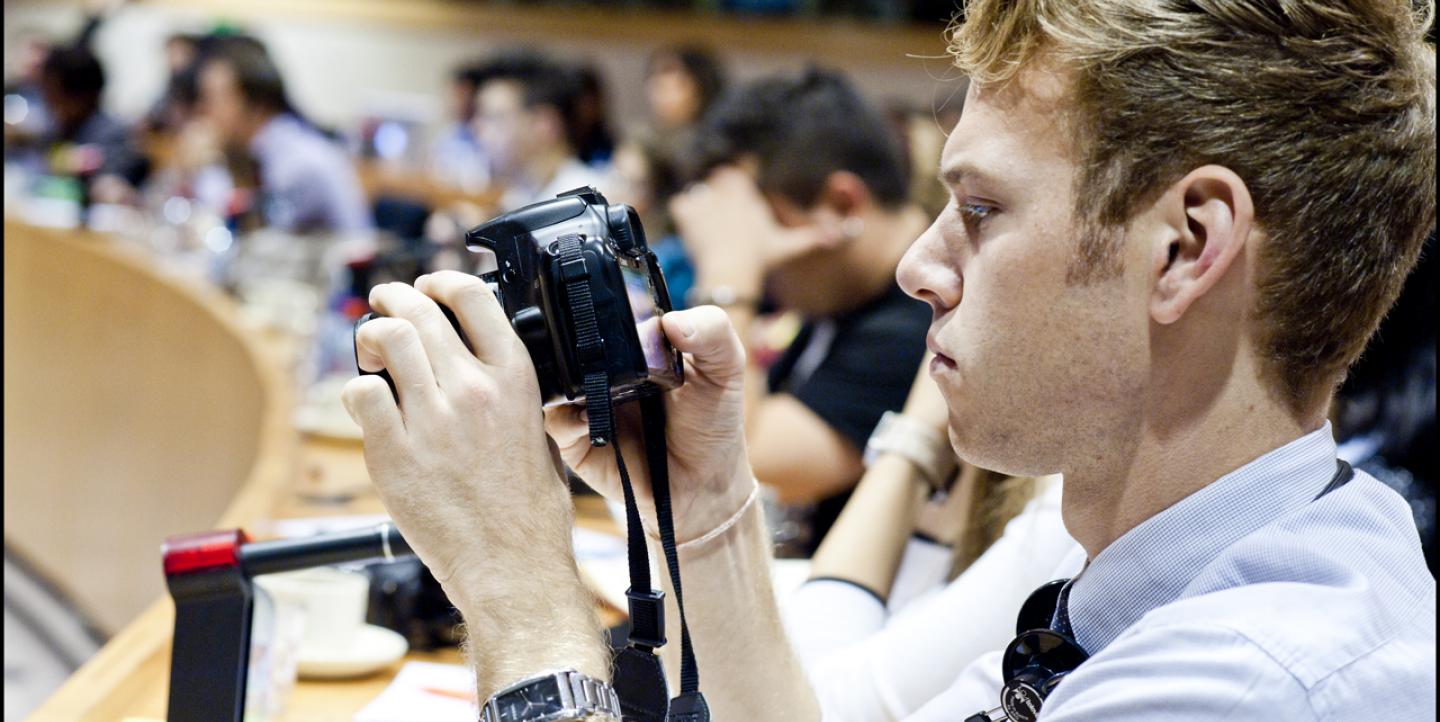In the era of job cuts and the digital overtake of traditional media roles, it's becoming more important than ever for journalists to stand out.
Branding yourself as a journalist is one way of telling your prospective employers what you can bring to the table. Recognizing the importance of branding for journalists, the International Center for Journalists is currently running an online course entitled “Branding for media professionals," developed by Steve Buttry, a digital media trainer and a visiting scholar at the Manship School of Mass Communication at Louisiana State University.
According to Buttry, “branding is an umbrella term to apply to efforts to identify a journalist with her work and distinguish her from others in the field." The course lists profiles of journalists who are doing distinguished work in branding themselves, including Mark S. Luckie, Greg Linch, Mandy Jenkins, Jeff Edelstein and others.
IJNet sat down with Buttry to talk branding, tools and tips.
IJNet: What are the five tips that you give to journalists who want to brand themselves?
Buttry:
1. A good brand starts with quality work. Branding is not a substitute for quality, but a way to ensure you get credit for your good work.
2. Use Twitter to join and contribute to the conversation about journalism and/or your niche in journalism and/or the niche you cover.
3. Consider a blog to contribute to the conversation about journalism and/or your niche in journalism and/or the niche you cover.
4. Google yourself (with keywords a prospective employer might use, especially if you have a common name). Consider how the results reflect on you professionally. If something that appears high in the results reflects poorly on you, consider asking for an update (if it's out of date, be sure to ask for an updated headline, too). Consider whether you can create new content (with strong SEO) that might appear higher in searches for you.
5. Be sure to provide accurate, updated, detailed accounts of your career on LinkedIn, the "about" page of your blog, about.me and various social media accounts. Link to the best account of your career from your Twitter, Facebook and other social media profiles.
IJNet: What are the common mistakes that journalists commit when they try to brand themselves?
Buttry: You might perceive branding as talking about yourself, and sometimes it's important to speak up for yourself. But don't make the mistake of thinking branding is just talking about yourself. In other social settings (the workplace, parties, conferences, etc.), no one enjoys someone who's always talking about himself or herself. It's the same on social media. Share links to the interesting things you read. Retweet interesting tweets. Reply to people and join interesting conversations. Then when you share links to your own content, people will be more interested in reading or viewing your work.
IJNet: What are the digital tools that you recommend for branding?
Buttry: The tools may depend on your skills: If you produce video journalism, tools such as YouTube, Vimeo, Tout, Instagram and Vine are more important. If your job involves curation, tools such as Storify, Spundge and RebelMouse are more important.
IJNet: Can you give examples of journalists who are branding themselves really well?
Buttry: Andy Carvin is an excellent example. His Twitter account when he was at NPR became must-reading during the Arab Spring uprisings. He became one of the strongest brands in social media, if not in all of journalism. That Twitter brand led to an opportunity to write a book, Distant Witness, which further strengthened the brand. And when he tweeted that NPR had offered him a buyout, he started fielding inquiries immediately. My former Digital First Media colleagues in Thunderdome show some great examples of branding too. They had strong brands individually and collectively, so when the company closed Thunderdome last spring, even though we were cast into a tight job market, the Thunderdome staff moved on to some excellent jobs.
Photo credit: The European Parliament. Flickr/Creative Commons.


